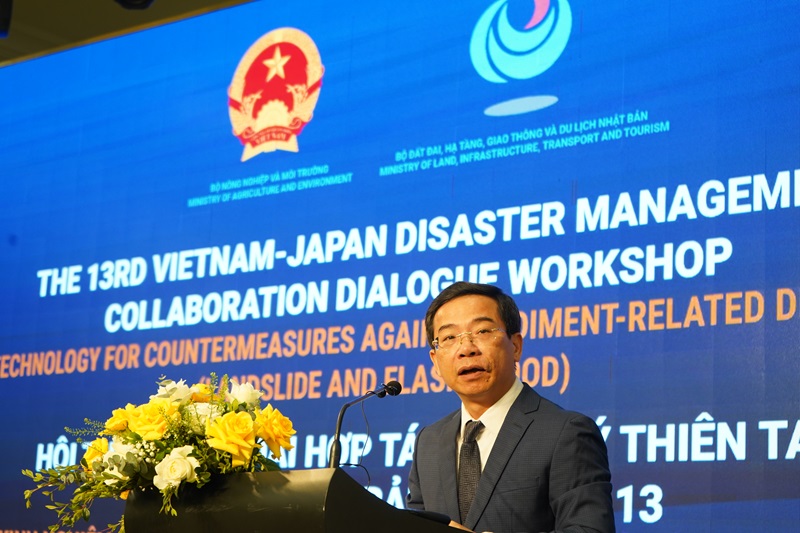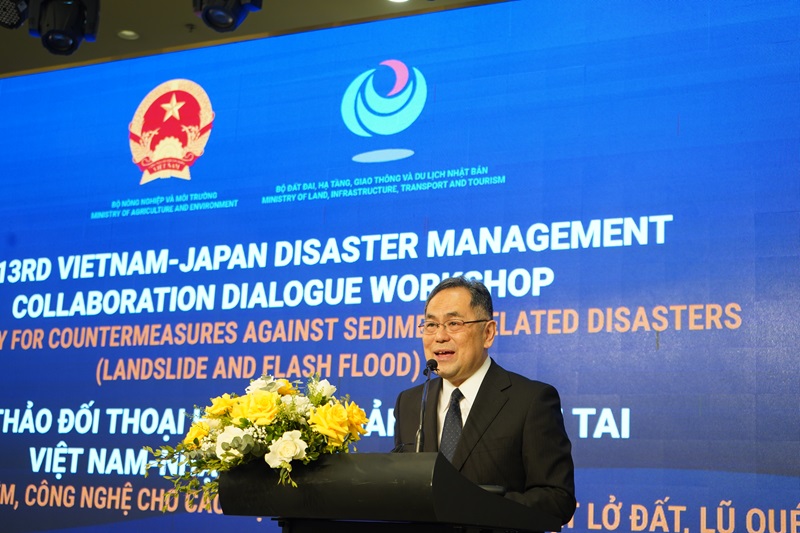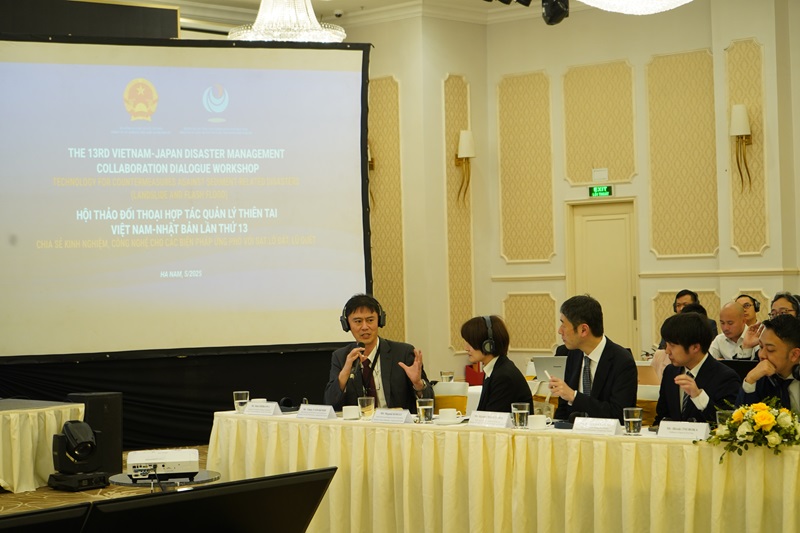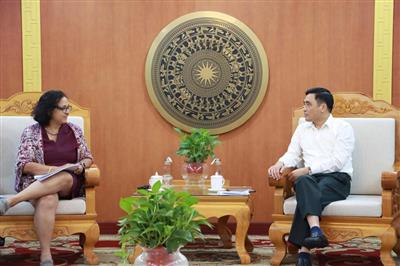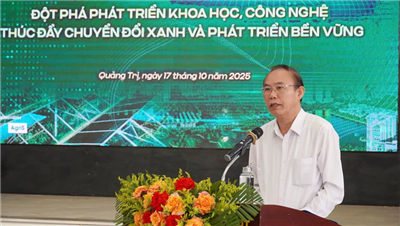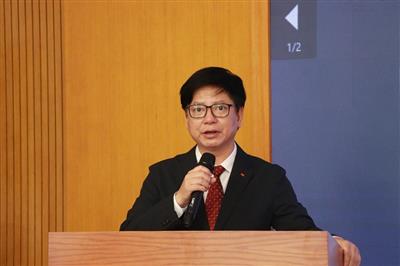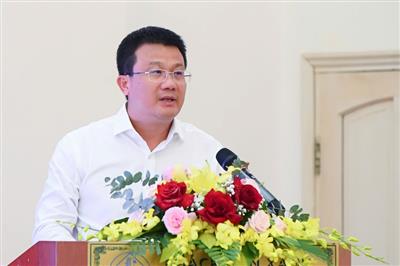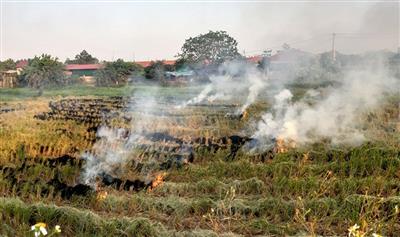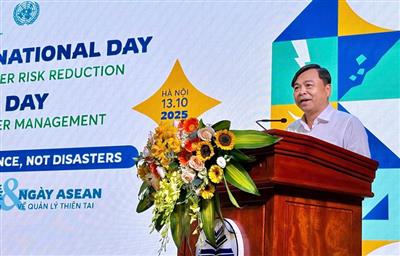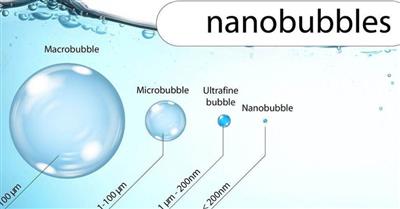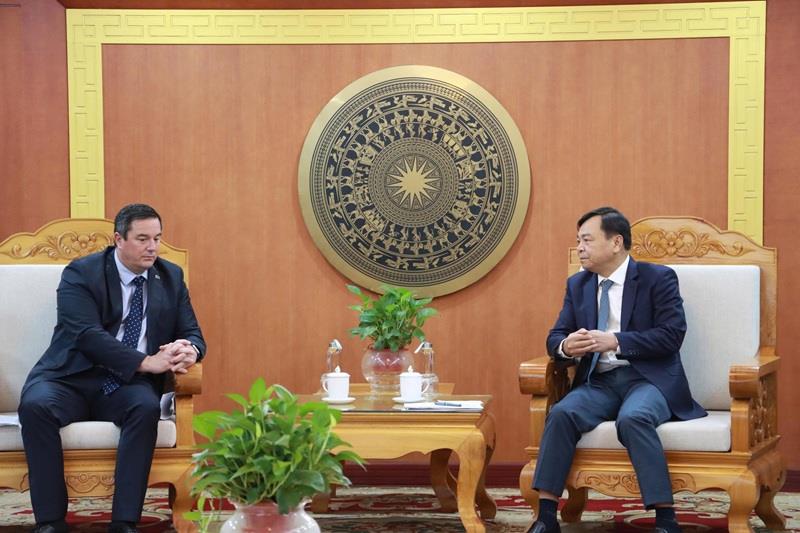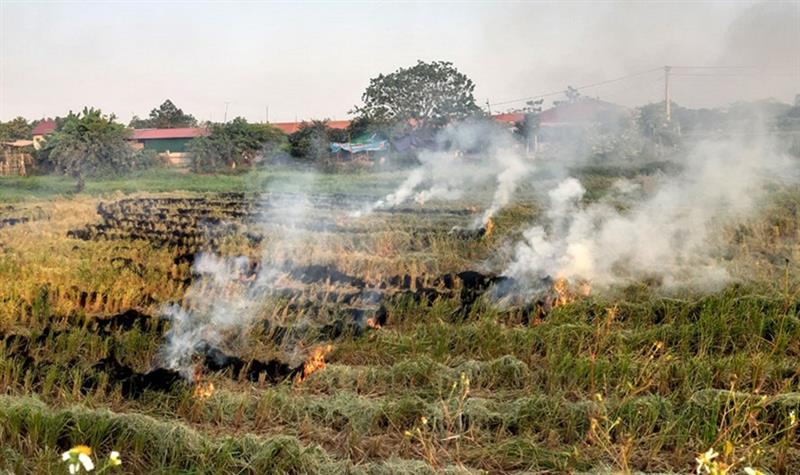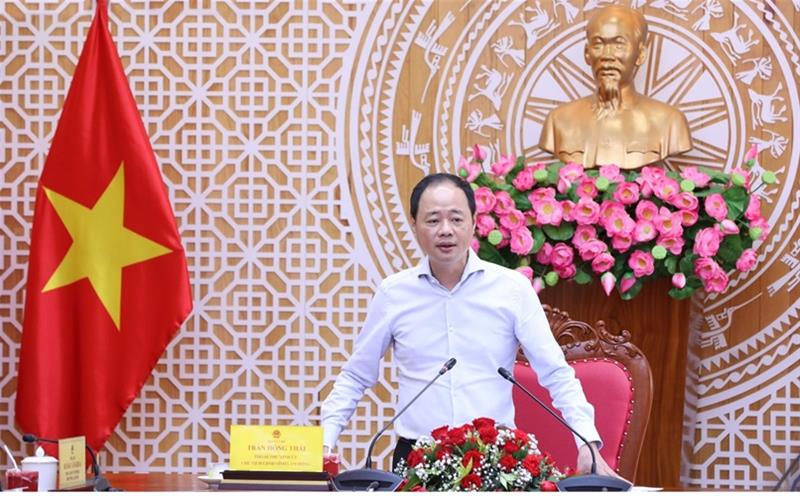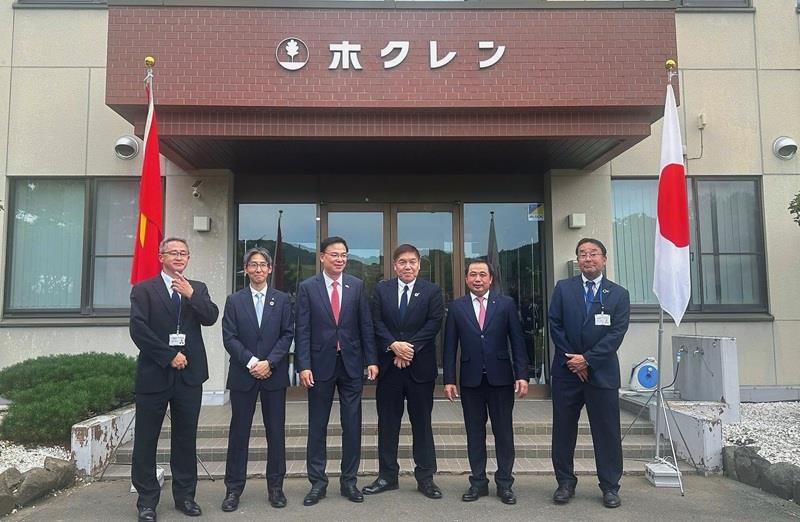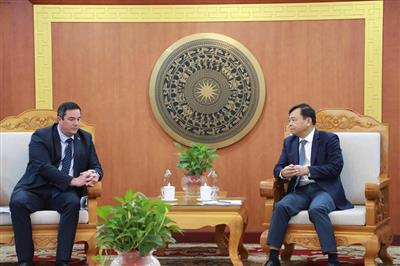
Strengthening Japan-Vietnam cooperation in landslide and flash flood management: Toward a model of disaster risk reduction
13/05/2025TN&MTIn the wake of the devastating natural disasters that struck Northern Vietnam in September 2024, including Typhoon Yagi, which resulted in 345 fatalities and missing persons, nearly 2,000 injuries, and damages exceeding VND 81.8 trillion, the 13th Vietnam-Japan disaster management collaboration dialouge workshop held on May 13, 2025, in Ha Nam came at a critical time. The event, jointly organized by Vietnam’s Ministry of Agriculture and Environment and Japan’s Ministry of Land, Infrastructure, Transport and Tourism (MLIT), marked another milestone in the long-standing partnership between the two nations in disaster risk reduction.
Mr. Nguyen Truong Son, Deputy Director General of the Vietnam Disaster and Dyke Management Authority (VDDMA)
With the theme “Technology for countermeasure against sediment-related disasters (landslide and flash flood)”, the dialogue offered a platform for both sides to share knowledge, evaluate technological interventions, and propose joint initiatives to mitigate disaster risks in vulnerable regions. Given Vietnam's topography—70% of which consists of mountainous terrain—combined with increasingly intense rainfall and storms due to climate change, landslides and flash floods have become not only more frequent but also more deadly and destructive.
A decade-long collaboration, now more vital than ever
Since the cooperation agreement was first signed 13 years ago, annual dialogues, technical workshops, and field visits have been held between the two ministries. These activities have facilitated the sharing of expertise on managing floods, landslides, riverbank and coastal erosion, and other water-related natural hazards. In particular, the dialogue series has helped Vietnam integrate Japanese experience and innovation into its disaster prevention systems.
Mr. Shin Ishikawa, Executive Assistant to the Minister for Foreign Affairs of Japan
This year’s dialogue highlighted one of the most notable outcomes of this collaboration: the pilot SABO dam project in Muong La district, Son La province. Completed in April 2025, the SABO dam is Vietnam’s first sediment control structure aimed at mitigating flash floods and debris flows in the Nậm Păm river basin—an area highly prone to landslides and flood-related disasters.
Officials from the Vietnam Disaster and Dyke Management Authority (VDDMA) under the Ministry of Agriculture and Environment expressed deep appreciation for the support provided by the Japanese Government and the Japan International Cooperation Agency (JICA). However, they also emphasized the need to go beyond the pilot phase. “The current dam is small in scale and implemented in isolation, which limits its overall effectiveness,” said Mr. Nguyen Truong Son, Deputy Director General of the Vietnam Disaster and Dyke Management Authority (VDDMA). He proposed the development of a comprehensive SABO dam system across the entire river basin as a model for replication in other high-risk regions.
Data-driven, technology-enabled approaches
During the dialogue, Ms. Dang Thi Huong, Deputy Head of the Disaster Response and Recovery Division, provided a sobering overview: between 2015 and 2024, landslides and flash floods claimed an average of 79 lives annually in northern and central mountainous areas of Vietnam. These disasters are primarily caused by steep terrain, fragile geological structures, and short-duration extreme rainfall.
To counter these threats, she proposed expanding early warning systems and disaster monitoring infrastructure. In particular, the integration of AI and digital technology—such as rainfall sensors, ground displacement detectors, and community alert systems—could significantly enhance the country’s capacity to predict and respond to sudden-onset events. She also called for increased international cooperation, including research exchange and technology transfer, as well as private sector involvement in developing and deploying appropriate solutions.
From the Japanese side, Mr. Takao Yamakoshi of MLIT outlined Japan’s categorization of sediment-related disasters into debris flows, landslides, and slope failures. Despite their localized impact, he noted, these events carry a disproportionately high risk to human life and require advanced planning. Japan’s strategy emphasizes land-use zoning, pre-disaster evacuation, and the construction of defensive infrastructure such as SABO dams. These principles, he said, could be effectively adapted to Vietnam’s context with the right institutional and technical support.
Toward a scalable model for northern Vietnam
The commitment to deeper cooperation was reaffirmed during the recent visit of Japanese Prime Minister Shigeru Ishiba to Vietnam, during which he and Vietnamese Prime Minister Pham Minh Chinh agreed to enhance joint efforts in disaster resilience—especially in the northern highlands where flash floods and landslides are becoming increasingly destructive. Mr. Shin Ishikawa, Executive Assistant to the Minister for Foreign Affairs of Japan, highlighted that sustainable development in rural and mountainous regions depends on reducing vulnerability through robust and localized disaster management systems.
As a follow-up to the dialogue, the Japanese delegation is scheduled to conduct site visits to several landslide-affected areas in Yen Bai province on May 14. These visits aim to gather further insight into Vietnam’s challenges and identify opportunities for more tailored and impactful cooperation in the near future.
Beyond infrastructure, both sides acknowledged the importance of public education and community preparedness. As Mr. Nguyen Truong Son emphasized: "Investing in disaster prevention must go hand-in-hand with raising people’s awareness." Public engagement, community-based early warning, and capacity building at the grassroots level are essential components of a resilient national strategy.
The SABO dam project in Nam Pam, while only a pilot, stands as a testament to the potential of international cooperation in translating science and technology into lifesaving interventions. As Vietnam looks ahead to a future of increasingly severe natural hazards, building on such cooperation to establish scalable, replicable models may prove crucial in protecting lives, infrastructure, and livelihoods.
Ngoc Huyen


